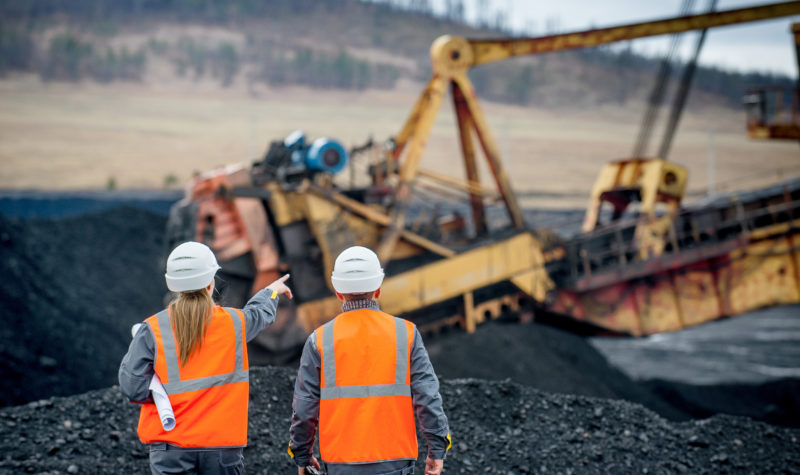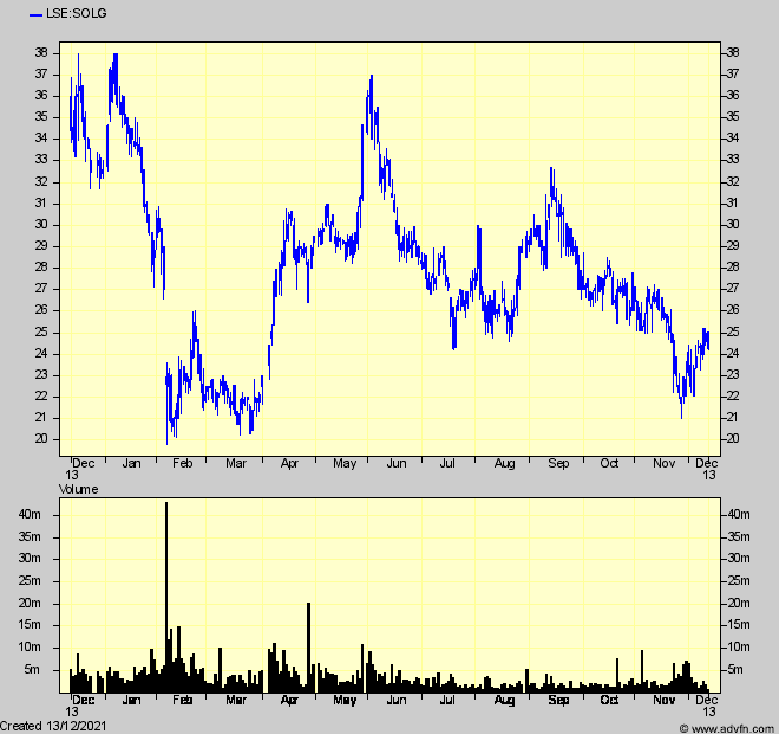Mining round-up – Digging in to 2021

Its not been a good year for AIM and early stage miners – including most of my own coverage. So will 2022 be any better – and should readers hold on to my earlier picks ?
(Regular readers will know that I don’t generally DO ‘tips’. I tend to do ‘one-off’ – sometimes in-depth exploring particular valuation nuances – reviews of miners who look interesting for one reason or another, in order to arm serious investors with the knowledge to time their own decisions. I assume investors look up for themselves a full description of a company. But I don’t have the space or time in MI to hold investors’ hands and update. I only to try to show at one point in time what I think they should look for.)
Certainly the market isn’t giving any miner much benefit of the doubt, let alone for the future. That is so for Xtract Resources (XTR) whose drilling results are showing not only a bigger resource at the Racecourse deposit, but that another, possibly equally large, resource lies alongside it, christened Ascot. IP surveys show yet other possibilities with similar IP characteristics still to be drilled. The trouble is that, as yet, few assay results have been received to show what sort of economics for a mine the copper grades will throw up. So far they don’t look startling, but it seems that a mine could nevertheless be feasible if the tonnage is large enough. Much information to fill that gap is expected soon, so the shares are definitely a hold.
Others are on hold for one reason or another, usually still awaiting funding like Armadale Capital (ACP) for its proposed highly profitable graphite mine in Tanzania, and ditto Condor (CNR) for La India in Nicaragua. Galantas Gold (GAL) is taking time to put in place its detailed plan to ramp up output at Cavanacaw in Northern Ireland which is now expected to start in the New Year (along with a rumoured further fund raise). My initial coverage showed that it capable of becoming a highly profitable and bigger mine. Similarly Kefi Gold and Copper (KEFI), having seemed very close to financial close for its Tulu Kepi gold mine in Ethiopia, once again fell under what investors must hope isn’t a permanent curse, when rebels in the North threatened a country-wide civil war. At present there are hopes of peace so that Tulu Kepi could start later this year and generate a much higher value for long-suffering shareholders. All these shares are all worth hanging onto.
Staying with Irish gold however, Conroy Gold and Copper (CGNR) which I have mentioned in the past, is strong on its proposed joint venture with experienced Turkish mining group Demir Export, to develop its three main Northern and Southern Irish licences to construction ready status and to bring them into operation as gold mines.
There is no hurry to chase the shares though, as it will take time to assess the potential, and the closer look that I will devote to it in the New Year
In copper, although I was obviously wrong to forecast that Solgold (with gold also) would recover from its doldrums by the year end, back to the 40p range, there us still time – read on. The doubts sown among investors about its competence to actually make money in the foreseeable future from its giant Cascabel project in Northern Equador haven’t however been assuaged yet by discovery of what could be another equally profitable but much earlier to develop resource at Porvenir in the South. The shares aren’t helped by tensions with Solgold’s biggest shareholder BHP who apparently wants to replace some of the Board. While shareholders will almost certainly make money one day, when is uncertain, unless more light is thrown on the situation in the AGM due now (December 15th). A new CEO has taken over who will update the market on when the revised Cascabel feasibility study can be expected, and, depending on what transpires at the AGM, I might have to update later. That 40p recovery target might even, at the last moment, be in view.

Ncondezi Power (NCCL) is still working on its Tete project in Mozambique, despite questions whether its Chinese sponsors will cancel it under the strictures on new coal projects, but which hasn’t stopped new coal plants being progressed elsewhere in Asia. The need and strong economic case for Tete, and the advanced stage it has reached in planning, means that the shares currently are valued on an extremely high reward/risk ratio. The Chinese could, at any moment, either withdraw their backing, or confirm it.
For something different I will be looking in the New Year at some green economy stocks – some with large funding needs which it is always necessary to be wary of when tempted to jump aboard what look like long term growth opportunities. They will include EQTEC, and Pensana, as well as an American rare earths play.
But investors looking now at the burgeoning ‘battery metals’ sector (copper, nickel, graphite lithium, cobalt) should note the strong lithium price (quadrupling from last year’s slump, to be now 15% above its 2018 peak) on China’s plans to double its EV production this year, coming on top of supply constraints. That has made it very timely for AIM’s re-named Atlantic Lithium (ALL) to start waving its flag. Until November it was Ironridge Resources (IRR) with a rag-bag of gold and lithium projects in West Africa, which it has now rationalised into just the one Ewoyaa lithium project in Ghana (having hived off the gold into a small unlisted company Ricca Resources whose shares have been distributed to holders)
To ensure its own supplies, NASDAQ listed Piedmont Lithium agreed in July to fund the whole of Ewoyaa’s capex to start production, in return for 50% of its lifetime output. At that time, the mine’s economics, stated as a $345m NPV in return for $70m initial capex, didn’t look too startling for IRR’s then £100m market cap. Its 50% of Ewoyaa’s NPV would have been ‘worth’ only £129m.
But with strong lithium subsequently, and a resource and mine life increased by drilling meanwhile, from 8 to 11.4 years, ALL last week was able to come up with much better looking economics, and is now quoting $789m for the same cost, with an exceptional 194% irr. That is based on a $900/tonne concentrate price, which is now $1,900 (but which could be a short term spike)
Not only that, but there looks scope to considerably extent Ewoyaa’s life beyond what the current resource will allow. So are the shares worth buying in their current strong phase just after the news ?
As ever, the economic case needs a closer look than most observers are probably giving it, beyond the apparent 52p per share ‘value’ now being thrown up by the NPV, against 26p in the market. On the back of the current lithium sentiment, some will no doubt be tempted to chase the shares.
Obviously all depends on the lithium price, which has been historically volatile in a market where supply can be switched on and off fairly frequently, and where China dominates demand and determines the price. But ALL is currently one of the few miners with the full funding to go very soon (like Horizonte Minerals but a lot sooner) while enjoying backing from successful mining investor DRG Global Capital.
Against that, and despite its exposure to lithium, ALL’s shares in the long run will depend on the validity of that NPV. So far, it has been derived from a low accuracy ‘scoping’ study and, before construction starts, will be updated with a more accurate Preliminary Feasibility study to be funded by Piedmont.
So the final figure could be different (one way or another), in addition to which are the factors always overlooked by retail investors For a start I can’t find the full study, to discover whether the NPV is before or after the 6% royalties payable on concentrate sales to the Ghana government and some past partners. Economic studies usually allow for them, but if not they will come out of net profits, which thereby will lose 15% as will the NPV. The calculations don’t take into account corporate costs either, and at present have to be based on 573m shares in issue plus 51m warrants, which might have to be increased in the future to fund the company’s costs before Ewoyaa’s revenues start, probably after 2024.
Adjusting for all those, takes ALL’s per share NPV from Ewoyaa down to under 44p per share, and readers know my view that shares in practice (for logical reasons) rarely reflect more than 50% of their theoretical NPV based ‘value’. Rather than an NPV, a more reliable guide is the expected earnings per share. On average ALL says annual EBITDA will be $178m. Assuming no interest (because Piedmont is funding all capex) but removing tax and royalties, brings that down to under $115m of which ALL’s 50% is worth 7p per current shares in issue. Is that prospect in 3-4 years time worth paying 27p now ? I don’t think so. But the shares would look attractive at a lower price and provided an eye is kept on the lithium price.
I note you only consider Lithium type batteries in your write up, what about the long term storage batteries that don’t need such high energy densities but will be needed for grid support e.g. Vanadium Redox Flow Batteries. They are better suited to backing the intermittent green grid up than Lithium is. Lithium is for one quite environmentally unfriendly, is a fire hazard and will be needed for EV’s. VRFB’s have none of those limitations and are thus eminently suitable for grid back-up despite being unsuitable for EV’s due to the lower energy density.
Would be great to hear your thoughts on #KP2, Kore Potash & #MTR, Metal Tiger?
Would love you to do a review of ATM and CGO if possible.